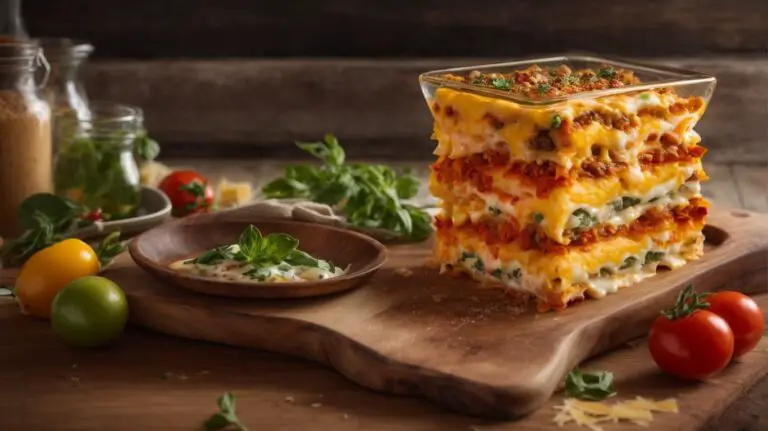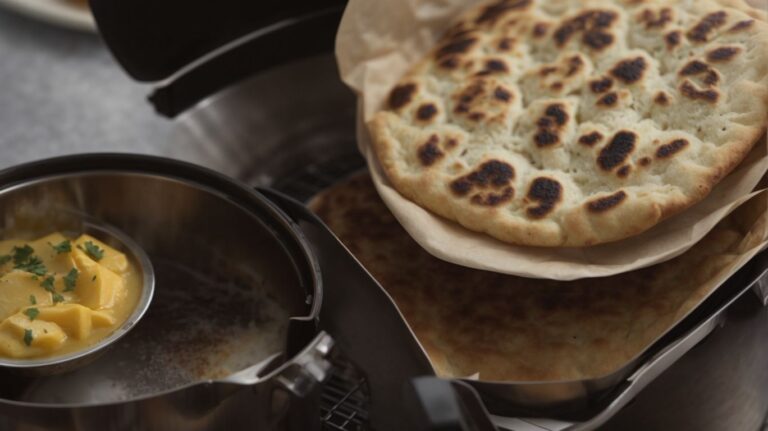How to Cook Nopales Without Slime?
Have you ever wondered what nopales are and why they produce slime when cooked? If so, you’re in the right place!
In this article, we will explore the world of nopales – from cleaning and preparing them for cooking to finding the best seasonings to complement their unique flavor. Join me, Chris Poormet, as we discover the different ways to cook nopales without the unpleasant slime, and learn how to store them for future culinary adventures.
Let’s get cooking!
Key Takeaways:
What Are Nopales?
Nopales, also known as cactus pads or prickly pear, are a staple in Mexican cuisine, particularly popular for their unique taste and health benefits.
These edible green pads come from the prickly pear cactus, native to Mexico, where they have been consumed for centuries. Nopales are celebrated not just for their delicious flavor but also for their numerous health benefits, being rich in essential nutrients like fiber, vitamins, and antioxidants. Their versatility in cooking is remarkable; they can be grilled, sautéed, pickled, or even added raw to salads, adding a refreshing crunch and a slightly tart flavor. One of the most intriguing aspects of nopales is their famous ‘cactus slime’ which contains powerful antioxidants and is believed to have medicinal properties.
Why Do Nopales Produce Slime When Cooked?
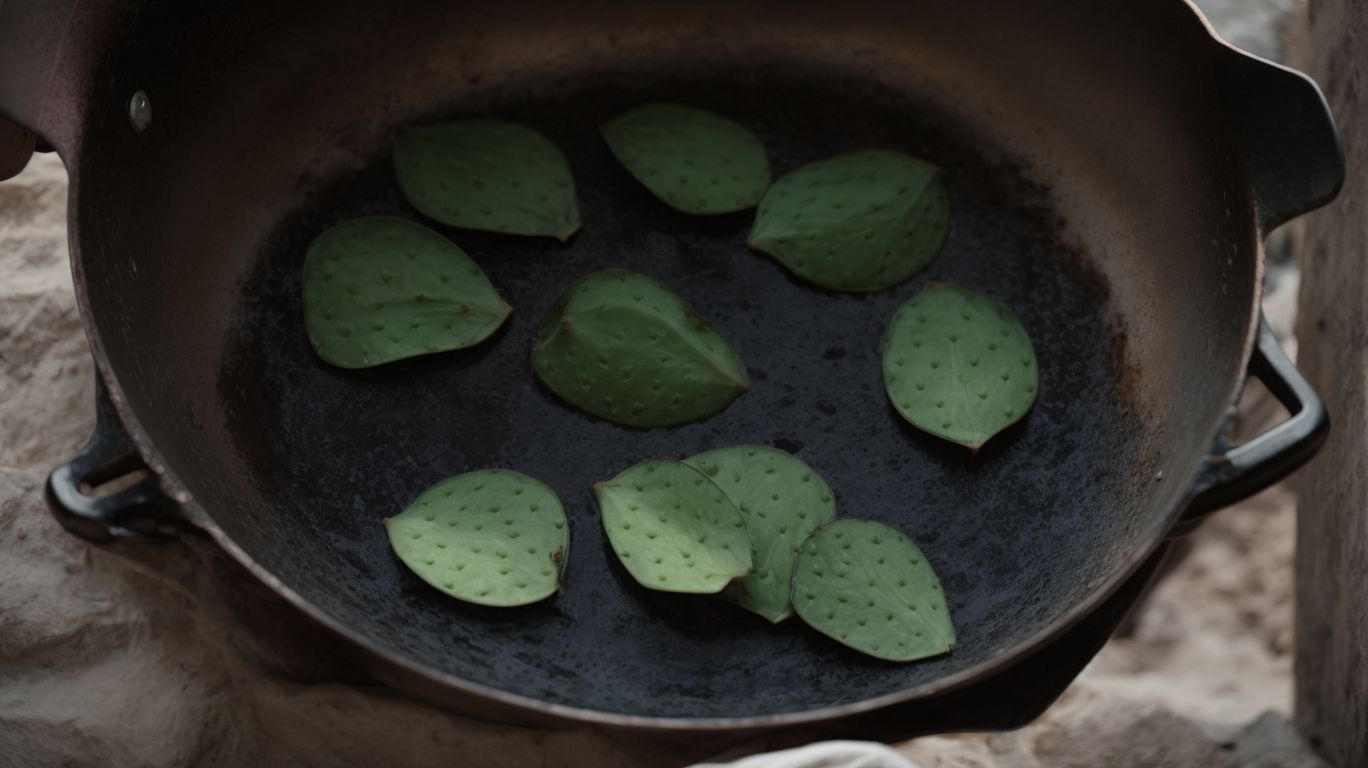
Credits: Poormet.Com – Peter Hill
The slimy texture of nopales when cooked is a result of their high mucilage content, a natural viscous substance that is released during the cooking process.
Nopales, also known as prickly pear cactus pads, contain a significant amount of mucilage within their cells. This mucilage is a type of soluble fiber that becomes more pronounced when the nopales are subjected to heat, causing it to leach out and create the signature slimy texture. When the mucilage comes into contact with water, it forms a gel-like consistency, giving nopales their unique texture and aiding in thickening soups or stews. This natural thickening property makes nopales a versatile ingredient in various culinary dishes.
How To Prepare Nopales For Cooking?
Preparing nopales for cooking involves cleaning, removing spines and eyes, and treating them with vinegar or baking soda to reduce slime and enhance their flavor.
To start, ensure you have fresh green nopales as they are easier to work with and maintain their vibrant color. Begin by rinsing the nopales under cold water, rubbing gently to remove any dirt or debris. Next, using a sharp knife, carefully trim off the edges and peel the outer skin, exposing the flesh. Then, with a vegetable peeler or paring knife, remove the thorns and eyes along the edges of the nopales.
Once cleaned, you can cut the nopales according to your recipe, whether diced, sliced, or left whole. Some prefer boiling the nopales briefly to further reduce slime, while others enjoy the raw crunchiness. If you opt for vinegar treatment, soak the cleaned nopales in water with vinegar for about 20-30 minutes to curb the slimy texture. Alternatively, a baking soda solution can also be used by mixing water and baking soda, then soaking the nopales before cooking.
Cleaning Nopales
Cleaning nopales is a crucial step before cooking, as it helps remove any dirt, debris, or residue that may affect the taste and texture of the final dish.
-
Start by rinsing the nopales under cool running water to remove any surface dirt.
-
Then, use a vegetable brush to gently scrub the nopales, especially focusing on the thorns or any stubborn spots.
-
Inspect the nopales for any remaining impurities or damaged parts, cutting off any discolored areas.
-
It’s important to pay attention to the edges and the ridges, where debris can often hide.
-
Once cleaned, they are ready to be sliced, diced, or cooked according to your recipe.”
Removing Spines and Eyes
Removing the spines and eyes from nopales is essential to avoid any prickly pear or unwanted textures in the cooked dish, ensuring a pleasant eating experience.
There are several techniques you can employ to safely handle nopales and prepare them for cooking. One effective method is to use a sharp knife to carefully slice off the edges of the pad, removing the thicker spines along with it. Next, holding the nopales under running water, gently scrub the surface with a vegetable brush to remove any remaining spines. To address the eyes, simply make an incision and peel off the thin layer where they are located.
This meticulous preparation not only guarantees a smoother texture in the final dish but also allows the flavors to shine through. By following these steps, you can elevate your culinary creations and fully enjoy the unique taste of nopales.
What Are The Different Ways To Cook Nopales Without Slime?
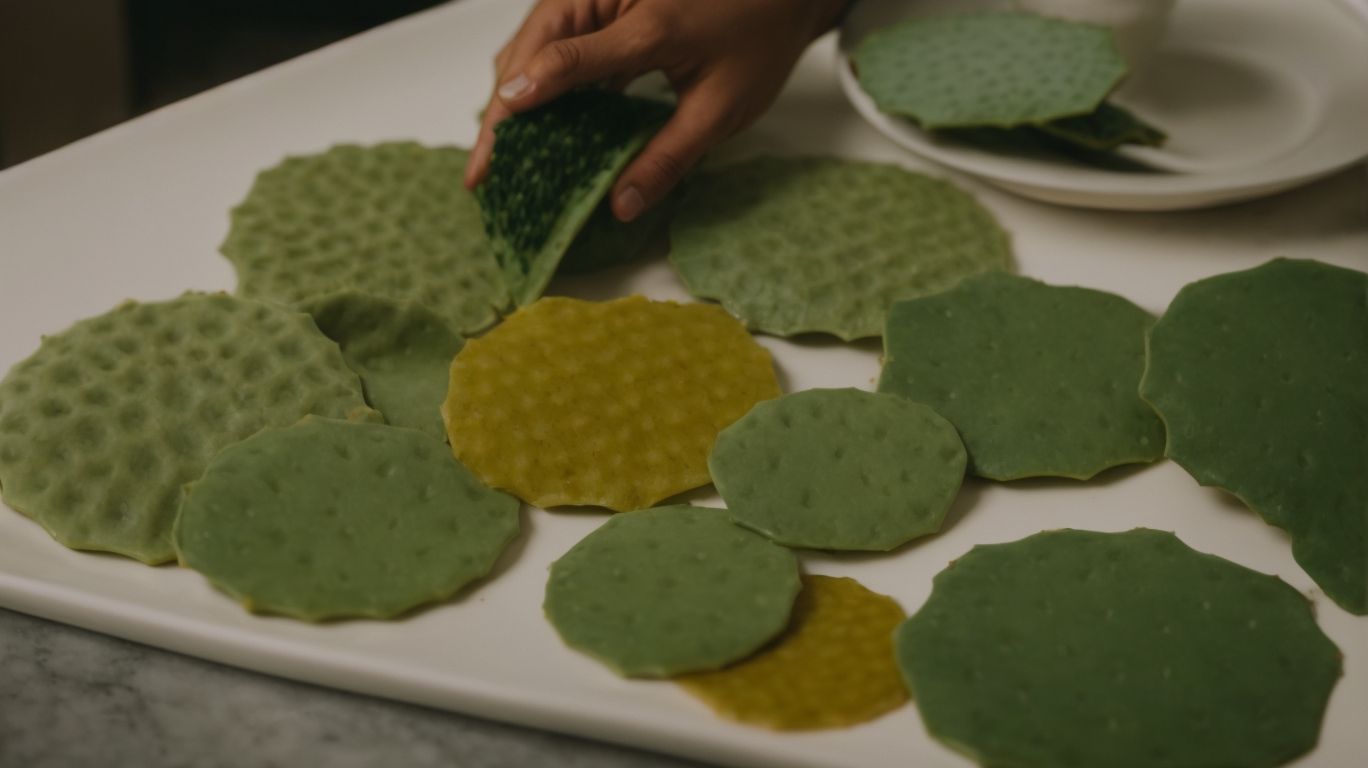
Credits: Poormet.Com – Randy Johnson
There are several methods to cook nopales without slime, including boiling, grilling, sautéing, roasting, and pickling, each offering a unique flavor profile and texture.
In terms of grilling nopales, the direct heat helps reduce slime and enhances their natural flavors, giving them a slightly smoky taste.
Boiling nopales is a traditional method often used in Mexican cuisine. By simmering them in salted water, you can extract the sticky substance and enjoy their bright green color and crisp texture.
If you prefer a tangy twist, pickling nopales is a fantastic option, infusing them with flavors of vinegar, herbs, and spices for a zesty addition to salads and tacos.
Each cooking technique brings out a different aspect of nopales, making them a versatile ingredient in the kitchen.
Boiling Nopales
Boiling nopales is a common method that softens the pads and reduces slime, making them suitable for dishes like nopales stew or soups.
When cooking nopales, it’s crucial to bring a pot of water to a rolling boil before adding the cleaned and chopped pads. Let them simmer for about 10-15 minutes until they turn a vibrant shade of green and become tender. To further enhance their texture, drain the nopales and rinse them with cold water. This not only helps to cool them down but also removes any residual gooeyness. You can then incorporate these boiled nopales into various stew recipes or sauté them with onions and peppers for a delicious side dish.
Grilling Nopales
Grilling nopales imparts a smoky flavor and charred texture, ideal for creating dishes that showcase the natural sweetness of the cactus pads.
When grilling nopales, it’s essential to properly prepare them to ensure a perfect balance of tenderness and char. Begin by removing the spines and tough outer skin, then slice the pads into smaller sections for even cooking. The dried nopales can also be rehydrated before grilling to soften them up. Once on the grill, the prickly pear pads quickly develop those coveted grill marks, offering a satisfying crunch with each bite. The charred edges contrast beautifully with the succulent flesh, creating a harmonious blend of flavors and textures.
Sauteing Nopales
Sautéing nopales in a pan with aromatic seasonings enhances their natural flavors and maintains a crisp texture, perfect for quick and flavorful dishes.
When preparing nopales for sautéing, begin by cleaning them thoroughly to remove any spines and sticky residue. Slice the nopales into strips or cubes, depending on your preference, to ensure even cooking.
- To enhance their flavor, consider adding ingredients such as minced garlic, diced onions, and a squeeze of fresh lime juice. These additions complement the green nopales beautifully.
- It’s important to avoid overcooking nopales, as they can become slimy. Cook them quickly over medium-high heat to retain their crisp texture and vibrant color.
- Experiment with different seasoning blends like cumin, paprika, or chili powder to further elevate the taste profile of sautéed nopales.
Roasting Nopales
Roasting nopales brings out a unique smoky flavor and caramelization, elevating their taste profile and making them a versatile ingredient in Mexican cuisine.
When roasting nopales, it is essential to prepare them correctly by removing the spines and rinsing them thoroughly.
- One popular method involves grilling the nopales directly over an open flame or on a grill, allowing them to char slightly while developing that delicious smoky taste.
- Alternatively, you can roast them in the oven by drizzling with olive oil and seasoning with salt, pepper, and Mexican spices. This method results in a tender texture with a hint of sweetness.
The roasted nopales can then be used in various Mexican dishes such as tacos, salads, or as a flavorful side dish. Their earthy flavor pairs well with other traditional Mexican ingredients like beans, corn, and avocado, adding depth to the overall dish.
Pickling Nopales
Pickling nopales in vinegar or brine preserves their freshness and tangy flavor, creating a versatile ingredient for salads, tacos, and traditional Mexican dishes.
During the pickling process, the nopales absorb the acidity of the vinegar, enhancing their crisp texture and infusing them with a delightful tang. This preservation method not only extends the shelf life of the nopales but also adds a unique zing to their taste profile.
In Mexican cuisine, pickled nopales are often used to add a burst of flavor to dishes such as enchiladas, ceviche, and salsas. Their versatility makes them a perfect accompaniment to grilled meats or as a topping for tostadas.
What Are The Best Seasonings To Use With Nopales?
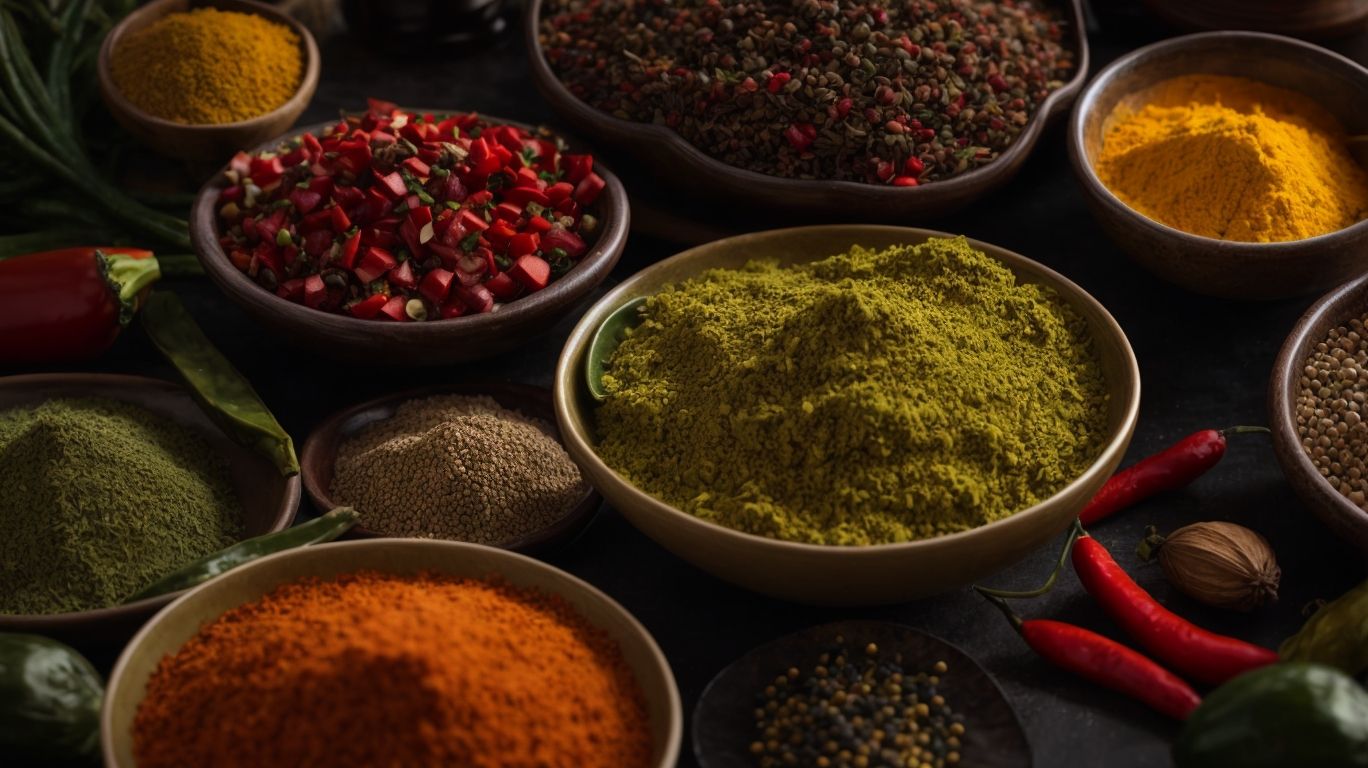
Credits: Poormet.Com – Gerald Walker
Enhance the flavor of nopales with a variety of seasonings such as lemon juice, garlic, cumin, chili powder, soy sauce, and sesame oil, creating a delicious fusion of tastes.
Each seasoning brings its unique flair to the dish. Lemon juice adds a refreshing tanginess that brightens the earthy tones of nopales. The garlic infuses a savory depth, while cumin introduces a warm, aromatic note. Chili powder contributes a kick of heat, balancing the flavors.
Soy sauce imparts a rich umami undertone that enhances the overall complexity of the dish. Lastly, sesame oil adds a subtle nuttiness that ties all the flavors together harmoniously.
Lemon and Lime Juice
Lemon and lime juice add a refreshing citrusy zing to nopales, balancing their natural earthy flavor with a burst of tanginess.
When using lemon and lime juice as seasonings for nopales, their acidic properties not only enhance the taste but also help tenderize the cactus pads, making them more palatable. The citrus notes cut through the vegetal taste of nopales, providing a bright counterpoint to the dish. The tangy flavor of these juices pairs exceptionally well with grilled or sautéed nopales, creating a harmonious blend of flavors that elevate the overall dining experience.
Garlic and Onion
Garlic and onion infuse nopales with savory depth and aromatic richness, elevating the overall taste profile of the dish.
Garlic, with its pungent and earthy flavor, adds a robust dimension to the nopales, while onion brings a delicate sweetness that balances the dish perfectly. When these two aromatic alliums mingle with the juicy, slightly tangy nopales, the result is a symphony of flavors that dance on the taste buds.
The aromatic qualities of garlic and onion not only enhance the taste but also contribute to the overall sensory experience of the dish. Whether sautéed, roasted, or caramelized, these ingredients bring out a complex layering of flavors that transforms a simple dish into a culinary delight.
Cilantro and Cumin
Cilantro and cumin bring herbal freshness and warm spice to nopales, creating a harmonious blend of flavors that resonates with Mexican cuisine.
Nopales, also known as prickly pear cactus pads, are an essential ingredient in traditional Mexican dishes, valued for their unique texture and earthy flavor. When combined with the bright, citrusy kick of cilantro and the earthy warmth of cumin, the dish transforms into a vibrant explosion of taste that is both comforting and invigorating.
Herbs and spices like cilantro and cumin have been an integral part of Mexican culinary heritage, adding depth and complexity to a wide array of dishes. The marriage of these flavors showcases the artistry and depth of Mexican cuisine, embodying the cultural tapestry of the region.
Chili Powder and Paprika
Chili powder and paprika add a kick of spice and smoky flavor to nopales, enhancing the dish with a tantalizing heat that complements their earthy taste.
When combined with nopales, chili powder introduces a bold and fiery element that awakens the taste buds with its intense heat, while paprika contributes a rich, smoky undertone that adds depth to the dish. The spicy notes from the chili powder create a harmonious balance with the earthiness of nopales, transforming the overall flavor profile into a complex and satisfying experience. Whether sautéing nopales with a sprinkle of chili powder or grilling them with a paprika rub, these spices elevate the dish and bring it to a whole new level.
Soy Sauce and Sesame Oil
Soy sauce and sesame oil introduce umami richness and Asian-inspired flavors to nopales, offering a unique fusion of tastes that marries diverse culinary traditions.
When soy sauce, with its deep savory notes, pairs with sesame oil’s nutty aroma, it creates a harmonious balance that enhances the earthy and slightly tangy flavor of nopales, a staple ingredient in Mexican cuisine. This cross-cultural culinary experience not only adds complexity and depth but also showcases the versatility of these Asian ingredients when paired with traditional Mexican flavors.
How To Store Nopales?
Properly store nopales by refrigerating fresh pads, storing cooked nopales in airtight containers, and preserving pickled nopales in jars in the refrigerator for extended shelf life.
When storing fresh nopales, ensure they are unwashed and place them in a plastic bag or container lined with paper towels to absorb excess moisture. Refresh the paper towels if they get damp to prevent spoilage.
Cooked nopales should be cooled completely before transferring them to airtight containers to maintain their texture and flavor.
For pickled nopales, make sure the jars are tightly sealed and kept in the refrigerator to enhance their taste and increase their shelf life. Rotate the jars occasionally to distribute the flavors evenly.
Fresh Nopales
Store fresh nopales in the refrigerator in a breathable container or perforated bag to maintain their crispness and prevent moisture buildup, ensuring longer shelf life.
When storing fresh nopales, it’s crucial to control the environment within the refrigerator to extend their freshness. Position the container in an area of the fridge where air circulation is optimal, as adequate airflow is key to preserving the nopales’ texture. Monitoring the moisture levels is essential to prevent them from becoming soggy. If using a perforated bag, make sure it allows just enough airflow to maintain freshness without drying out the nopales. By following these simple steps, you can enjoy delicious and crisp nopales for an extended period.
Cooked Nopales
Keep cooked nopales in a sealed airtight container in the refrigerator to retain their flavor and prevent cross-contamination, ensuring safe consumption for future use.
Storing cooked nopales in an airtight container helps in preserving their freshness by safeguarding them from exposure to external elements that can lead to spoilage. The tight seal of the container prevents moisture loss, maintaining the crunchiness and natural taste of the nopales for a longer period.
Using an airtight container minimizes the risk of bacterial growth, which can occur in improperly stored food. This plays a crucial role in upholding food safety standards and ensuring that the nopales remain safe for consumption.
Pickled Nopales
Store pickled nopales in sterilized jars in the refrigerator to prolong their shelf life and preserve the tangy flavors and crunchiness of the preserved cactus pads.
To ensure the pickled nopales stay fresh, it’s crucial to sterilize the jars properly before filling them. You can do this by washing the jars in hot, soapy water and then submerging them in boiling water for around 10 minutes. Once the jars are sterilized, fill them with the prepared pickled nopales, making sure there are no air bubbles trapped inside. Seal the jars tightly and place them in the refrigerator to chill. This method not only maintains the quality and flavor of the nopales but also prevents any bacterial growth, ensuring they remain safe to consume.
Frequently Asked Questions
What are nopales and why do they produce slime when cooked?
Nopales are a type of cactus commonly used in Mexican cuisine. The slime is a natural defense mechanism of the plant to protect itself from insects and animals.
How can I remove the slime from nopales before cooking?
To remove the slime, wash the nopales thoroughly and then use a knife to scrape off the slime. Some people also recommend soaking the nopales in salted water before cooking.
Can I cook nopales without removing the slime?
Yes, you can cook nopales with the slime, but it may affect the texture and taste of the final dish. It’s best to remove the slime beforehand for a better cooking experience.
What is the best way to cook nopales without slime?
The best way to cook nopales without slime is to grill, sauté, or stir-fry them. The high heat helps to evaporate the slime, giving you a more pleasant texture.
Are there any other methods to prevent nopales from producing slime when cooked?
Yes, you can also add acidic ingredients like lemon juice or vinegar to the cooking process. The acid helps to neutralize the slime and prevents it from becoming slimy.
Can I freeze nopales without worrying about slime?
Yes, you can freeze nopales without having to worry about slime. Since freezing stops the cactus from producing slime, you can cook them directly from frozen without any issues.


